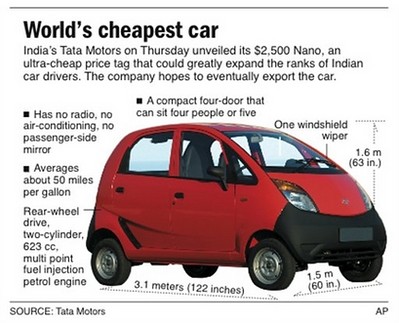The chase for stimulus dollars now includes a sprint up Capitol Hill, quite literally.
The stimulus package has $2.5 billion for batteries and hybrids, and one of the many companies seeking a slice, AFS Trinity, arrived in Washington on Sunday with two Saturn Vue S.U.V.’s — “crossover” vehicles that General Motors sells as hybrids, but which AFS Trinity has extensively modified as plug-in hybrids.
The company is inviting members of Congress and their employees to drive them, and a favorite stretch is a steep hill up Constitution Avenue on the north side of the Capitol building.
AFS Trinity, of Bellevue, Wash., added two kinds of batteries to the Vue: A bank of lithium-ion batteries with 16 kilowatt-hours of usable storage (enough to go more than 40 miles), and a small bundle of ultra-capacitors — devices that hold only a little bit of energy, but can deliver or accept it very quickly.
The ultra-capacitors smooth out the start-and-stop flow of that comes with everyday driving, buffering the main batteries in a way that extends their lifetime. And they deliver real “vroom,” even though the electric drivetrain is silent.
The original Saturn comes with a four-cylinder, 170-horsepower gasoline engine. As a plug-in, normal practice would be to charge the battery overnight and drive around without the engine for the first 40 miles or so, but AFS Trinity put a button near the cigarette lighter. Push it, and the electric motor kicks in, creating a 370-horsepower street rod.
The vehicle can also run in gasoline–only mode. And it can run in something called “charge-depleting mode,’’ in which it uses electricity from the battery to assist the gasoline engine. In that mode, it gets 68 miles a gallon, the company said, and it can operate that way for 60 miles — far longer than most peoples’ daily drive.
From the outside, the prototypes look like ordinary Saturn Vue’s, except for the big lettering on the side that announce them as 150-mile-per-gallon vehicles (that number assumes the owner drives it in all-electric mode most of the time).
Edward W. Furia, AFS Trinity’s chief executive, is looking for $40 million to build 100 cars, probably for use by a government agency like the Postal Service, then $200 million for the next thousand vehicles. Eventually he would like $1.3 billion to re-tool a GM factory to produce hundreds of thousands of plug-in hybrids. The company’s long-term plan is to produce vehicles with a price premium of $8,000 above the cost of the regular, nonhybrid version. If it could reach that point, the consumer’s extra investment might be quite small, after federal and state tax credits.









 In forgoing the loan, Chrysler Financial opted to use more expensive financing from private banks, adding to the burdens of the already fragile automaker and its financing company.
In forgoing the loan, Chrysler Financial opted to use more expensive financing from private banks, adding to the burdens of the already fragile automaker and its financing company.